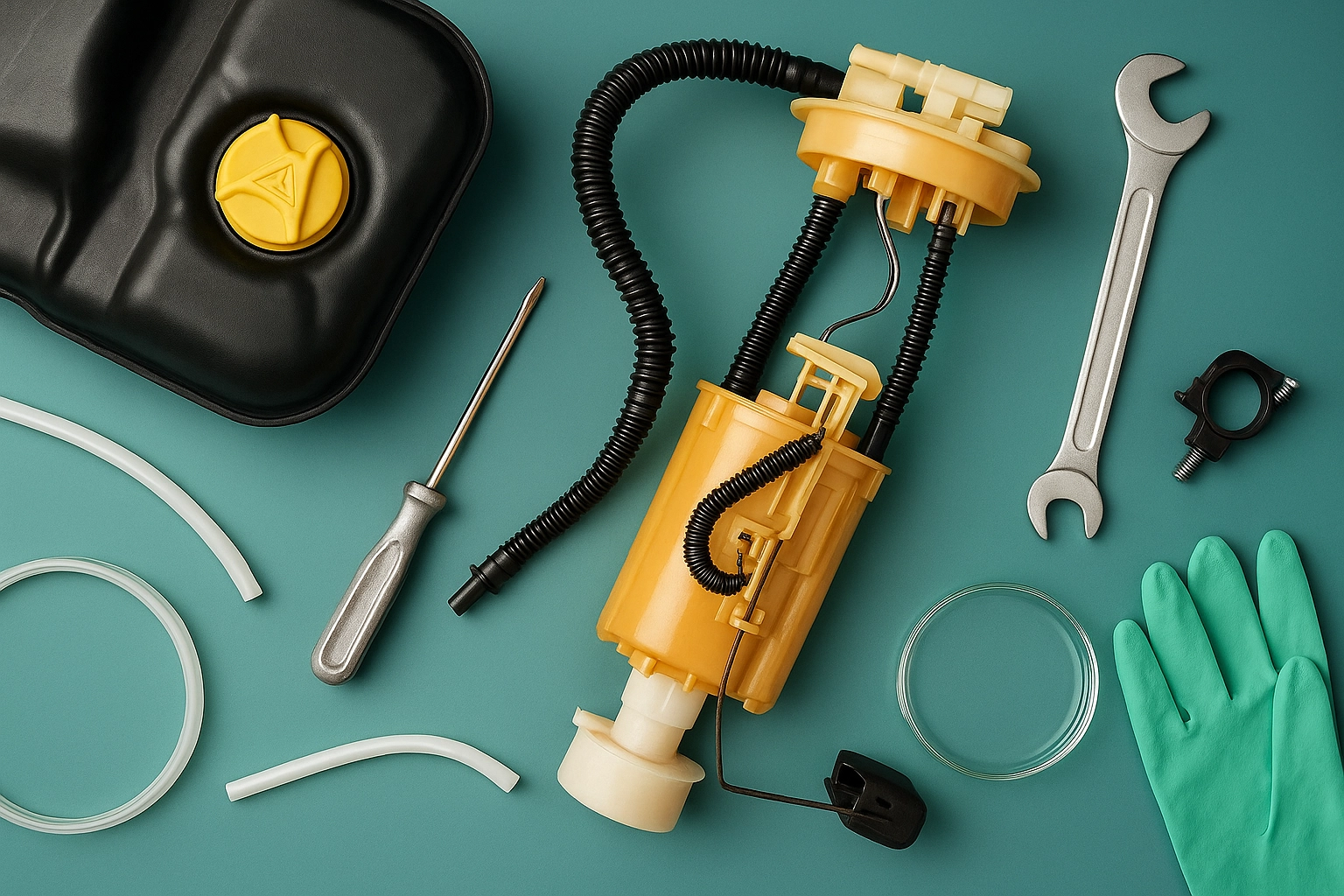SAE J2659 Fuel Tank Pressure Relief Valve Test
The SAE J2659 standard is a critical component in ensuring the safety and functionality of fuel systems within the automotive industry. This test evaluates the performance, durability, and integrity of pressure relief valves used in fuel tanks to prevent overpressurization. Overpressure can lead to dangerous situations such as fuel leaks or explosions, which are unacceptable in vehicle operation.
The valve's role is to open when the internal pressure exceeds a predetermined threshold, allowing excess fuel vapor to escape safely through an exhaust port. This prevents catastrophic failure of the tank and associated components under extreme conditions like high temperatures or mechanical stress. The test itself involves subjecting the valve to various pressures and monitoring its behavior over time.
The SAE J2659 specifies that the pressure relief valve must withstand a minimum burst pressure of 10 psi (pounds per square inch) above the specified design pressure. The test aims to ensure that the valve operates correctly under these conditions without compromising safety or performance. It also requires that the valve does not allow fuel to leak through when in its closed position and maintains this integrity over multiple cycles.
Testing according to SAE J2659 involves a series of steps designed to simulate real-world operational scenarios. First, the valve is mounted onto a test fixture which simulates the installation environment within the vehicle. Then, it undergoes initial pressure testing where the internal pressure is gradually increased until it reaches the specified threshold.
During this phase, the tester monitors both the valve's behavior and any leakage around its seal. Once the valve opens due to excessive pressure, further tests are conducted to assess how well it regulates flow once opened. After reaching a predetermined maximum pressure or cycle count, the test concludes by subjecting the valve to a final inspection for signs of damage.
The results from these tests provide crucial insights into the reliability and performance characteristics of fuel tank pressure relief valves. Compliance with SAE J2659 ensures that manufacturers meet stringent regulatory requirements while enhancing overall vehicle safety standards.
For quality managers, compliance officers, R&D engineers, and procurement professionals involved in automotive testing, understanding these nuances is essential for maintaining high product quality and ensuring adherence to industry best practices.
Why Choose This Test
Ensures compliance with stringent automotive safety standards.
Provides confidence in the reliability and longevity of fuel tank components.
The SAE J2659 test is crucial for maintaining high quality throughout the lifecycle of vehicles. By ensuring that pressure relief valves operate efficiently, it helps prevent accidents caused by improper functioning or design flaws. This not only enhances passenger safety but also contributes positively towards environmental protection efforts.
For companies aiming to maintain a strong reputation within their industry sectors, adherence to such rigorous tests demonstrates commitment to excellence and consumer trustworthiness.
Quality and Reliability Assurance
Comprehensive evaluation of valve performance under various stress conditions.
Continuous monitoring for signs of wear, tear, or damage during testing cycles.
The SAE J2659 test provides robust quality assurance measures that ensure fuel tank components meet the highest safety standards. By closely following these protocols, manufacturers can identify potential issues early on and implement necessary improvements before they become critical problems.
Reliable performance of fuel system components is crucial for maintaining vehicle integrity and operational efficiency. Through thorough testing procedures like those specified in SAE J2659, industries can achieve peace of mind knowing that their products are up to par with the latest technological advancements and regulatory expectations.
Competitive Advantage and Market Impact
Adhering to stringent testing protocols such as those outlined in SAE J2659 offers significant competitive advantages for automotive manufacturers. It sets a benchmark of excellence that positions them favorably among competitors, enhancing brand reputation and customer satisfaction.
In today’s highly competitive market, where consumer trust is increasingly valued, compliance with these standards becomes an indispensable asset. Companies that prioritize such rigorous testing not only meet but exceed regulatory requirements; they also demonstrate their dedication to innovation and sustainability practices.
The ability to offer products that consistently perform at peak levels can significantly impact market share by attracting more customers who value safety and reliability. Furthermore, it fosters long-term relationships with stakeholders—whether they be suppliers, partners, or end-users—who appreciate the commitment towards quality assurance.





